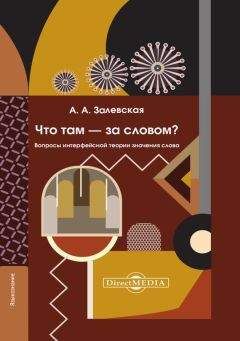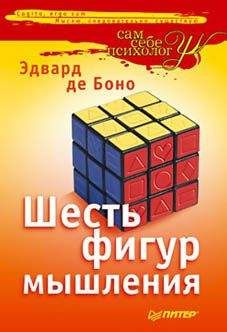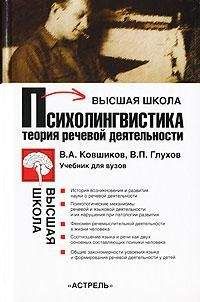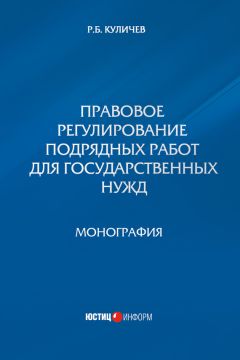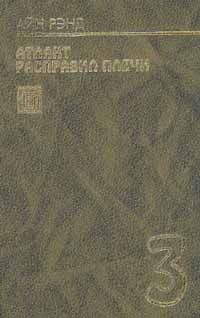Ознакомительная версия.
7. Бутенко Н.П. Словник асоцiативних норм украïнськоï мови. – Львiв: Вища школа, 1979. – 120 с.
8. Бутенко Н. П .Словник асоцiативних означень iменникiв в украïнськiй мовi. – Львiв: Вища школа; Вид-во при Львiв. ун-тi., 1989. – 328 с.
9. Галерея ассоциативных портретов: коллективная монография / Т. М. Рогожникова и др.; под общ. ред. Т. М. Рогожниковой. – Уфа: Уфимск. гос. авиац. техн. ун-т, 2009. – 448 с.
10. Голикова Т.А. Алтайско-русский ассоциативный словарь. – М.: Изд-во ОЛСИБ, 2004. – 380 с.
11. Гольдин В. Е. Русский ассоциативный словарь: ассоциативные реакции школьников 1-Х1 классов: в 2 т. / В. Е. Гольдин, А. П. Сдобнова, А. О. Мартья-нов. – Саратов: Изд-во Сарат. унта, 2011.
12. Гуц Е. Н .Ассоциативный словарь подростка. – Омск: Изд-во «Вариант-Сибирь», 2004. – 156 с.
13. Дмитрюк Н.В. Казахско-русский ассоциативный словарь. – Шымкент: «Мирас»; М.: ИЯ РАН, 1998. – 245 с.
14. Колодкина Е. Н .Конкретность, образность и эмоциональность 215 русских существительных // История русского литературного языка и стилистика: сб. науч. тр. – Калинин: Калинин. гос. ун-т, 1985. – С. 40–51.
15. Коротун О. В .Ассоциативный словарь внешнего человека. – Омск: «Вариант-Омск», 2010. – 376 с.
16. Мартiнек С. В .Украïньский асоцiативний словник: У 2 т. – Т. 1: Вiд стимулу до реакцiï. – Лвiв: Видавничий центр ЛНУ iменi Iвана Франка, 2007. – 344 с. – Т. II: Вiд реакцiï до стимулу. – 468 с.
17. Маскадыня В.Н. Нормативные данные для 50 субстантивных категорий: На материале русского языка. – Калинин: Калинин. гос. ун-т, 1987. – 160 с. – Деп. в ИНИОН АН СССР 31.07.87, № 30609.
18. Овчинникова И. Г. Береснева Н.И., Дубровская Л.А., Пенягина Е. Б .Лексикон младшего школьника (характеристика лексического компонента языковой компетенции). – Пермь: Изд-во Пермск. ун-та, 2000. – 312 с.
19. Палкин А. Д .Толковый словарь русского языка глазами детей. – М.: НОУ МЭЛИ, 2004. – 360 с.
20. РАС:Русский ассоциативный словарь / Ю. Н. Караулов, Ю. А. Сорокин, Е. Ф. Тарасов, Н. В. Уфимцева, Г. А. Черкасова. – В 6 кн. – М.: «Помовский и партнеры»; ИРЯ РАН, 1994–1998.
21. Русский ассоциативный словарь: ассоциативные реакции школьников 1-11 классов: в 2 т. / В. Е. Гольдин, А. П. Сдобнова, А. О. Мартьянов. – Саратов: Изд-во Сарат. ун-та, 2011. – Т.1. – 500 с.
22. Славянский ассоциативный словарь: русский, белорусский, болгарский, украинский / Н. В. Уфимцева и др. – М.: МГЛУ; Ин-т языкознания РАН, 2004. – 792 с.
23. САНРЯ: Словарь ассоциативных норм русского языка / под ред. А. А. Леонтьева. – М.: Изд-во Моск. ун-та, 1977. – 201 с.
24. Соколова Т.В. Ассоциативный словарь ребенка: В 2-х ч. – Архангельск: Изд-во Поморск. междунар. пед. ун-та, 1996. – Ч.1 – 165 с; Ч.2 – 305 с.
25. Титова Л.Н. Киргизско-русский ассоциативный словарь. – Фрунзе: «Мектеп», 1975. – 96 с.
26. Ульянов Ю. Е .Латышско-русский словарь – Рига: «Зинатне», 1988. – 187 с.
27. Филиппович Ю.Н., Черкасова Г.А., Дельфт Д. Ассоциации информационных технологий: эксперимент на русском и французском языках. – М.: Изд-во МГУП, 2002. – 304 с.
28. Цiтова А.I. Асацыятыўны слоўнiк беларускай мовы. – Мiнск: Выд-ва БДУб 1981. – 144 с.
29. Altarriba, J., Bauer, L.M. & Benvenuto, C. Concreteness, context availability, and imageability ratingsand word associations for abstract, concrete, and emotional words // Behavior Research Methods, Instruments, & Computers. – 1999. – Vol. 31. – Pp. 578–602.
30. Ashcraft, M. Property norms for typical and atypical items from 17 categories: A description and discussion // Memory and Cognition. – 1978. – Vol. 6 (3). – Pp. 227–232.
31. Balota, D.A., Cortese, M.J., Hutchison, K.A., Neely, J.H., Nelson, D., Simpson, G.B. & Treiman, R. The English Lexicon Project: A web-based repository of descriptive and behavioral measures for 40,481 English words and nonwords (2002). Accessed September 30, 2004, on Washington University Web site: http://elexicon.wustl.edu.
32. Balota, D.A., Pilotti, M., & Cortese, M.J. Subjective frequency estimates for 2.938 monosyllabic words // Memory & Cognition. – 2001. – Vol. 29. – Pp. 639–647.
33. Barca, L., Burany, c., & Arduino, L.S. Word naming times and psycholinguistic norms for Italian nouns // Behavior Research Methods, Instruments, & Computers. – 2002. – Vol. 34. – Pp. 424–434.
34. Battig, W.F., & Montague, W.E. Category norms for verbal items in 56 categories: A replication and extension of the Connecticut category norms // Journal of Experimental Psychology. – 1969. – Vol. 80. – N.3. – Pt.2. – Pp. 1–16.
35. Bellezza, F.S., Greenwald, A.G., & Banaji, M.R. Words high and low in pleasantness as rated by male and female college students // Behavior Research Methods, Instruments, & Computers. – 1986. – Vol. 18. – Pp. 299–303.
36. Bird, H., Franklin, S., & Howard, D. Age of acquisition and imageability ratings for a large set of words, including verbs and function words // Behavior Research Methods, Instruments, & Computers. – 2001. – Vol. 33. – Pp. 73–79.
37. Bradley, M.M. & Lang, P.J. Affective norms for English words (ANEW): Instruction manual and affective ratings: Technical Report C–1. – University of Florida, The Center for Research in Psychology, 1999 [Электронный ресурс].
38. Brown, W.P., & Ure, D.M.J. Five rated characteristics of 650 word association stimuli // British Journal of Psychology. – 1969. – Vol. 60. – Pp. 233–249.
39. Burke, D.M., Peters, L. & Rose, M.H. Word association norms for young and older adults // Social and Behavioral Science Documents. – 1987. – Vol. 17 (2). [Электронный ресурс].
40. Carroll, J.B. & White, M.N. Age of acquisition norms for 220 pictureable nouns // Journal of Verbal Learning & Verbal Behavior. – 1973. – Vol. 12. – Pp. 563–576.
41. Clark, J.M., & Paivio, A. Extensions of the Pavio, Yulle, and Madigan (1968) norms // Behavior Research Methods, Instruments, & Computers. – 2004. – Vol. 36. – Pp. 371–383.
42. Cortese, M., & Fuggett, A. Imageability ratings for 3,000 monosyllabic words // Behavior Research Methods, Instruments, & Computers. – 2004. – Vol. 36. – Pp.384–387.
43. De Deyne, S. & Storms, G. Word associations: Norms for 1,424 Dutch words in a continuous task // Behavior Research Methods. – 2008a. – Vol. 40 (1). – Pp. 198–205.
44. De Deyne, S. & Storms, G. Word associations: Network and semantic properties // Behavior Research Methods. – 2008b. – Vol. 40(1). – Pp.213–231.
45. De Groot, A.M.B. Mondelinge woordassociatienomen: 100 woordassociaties op 460 Nederlandse zelfstanige naamwoorden [Oral word association norms: 100 word associations to 460 Dutch nouns]. – Lisse, The Netherlands: Swets & Zeitlinger, 1980.
46.de la Haye, F. Normes d’associations verbales chez des enfants de 9, 10 et 11 ans et des adults // L’Année Psychologique. – 2003. – Vol. 103. – Pp. 109–130.
47.Entwisle, D.R. Word associations of young children. – Baltimore: The John Hopkins Press, 1966.
48. Fernández, A., Diez, M., Alonso, A., & Beato, M. Free-Association Norms for the Spanish Names of the Snodgrass and Vanderwart Pictures // Behavior Research Methods, Instruments, & Computers. – 2004 – Vol. 36(3). – Pp. 577–583.
49. Ferrand, L. & Alario, F. – X. French word association norms for 366 names of objects // L’Année Psychologique. – 1998. – Vol. 98(4). – Pp. 659–709.
50. Friendly, M., Franklin, P.E., Hoffman, D., & Rubib, D.C. The Toronto Word Pool: Norms for imagery, concreteness, orthographic variables, and grammatical usage foe 1,080 words // Behavior Research Methods, Instruments, & Computers. – 1982. – Vol. 14. – Pp. 375–399.
51. Gerrоw, J.R. & Pо11iо, E.R. Word association, frequency of occurrence, and semantic differential norms for 360 stimulus words: The University of Tennessee. Dept. of Psychology. Technical Report No.1. April, 1965.
52. Ghyselinck, M., Custers, R. & Brysbaert, M. Age-of-acquisition ratings for 2322 Dutch words from 40 different semantic categories // Psychologica Belgica. – 2003. – Vol.43. – Pp. 181–214.
53. Ghyselinck, M., De Moor, W. & Brysbaert, M. Age-of-acquisition ratings for 2816 Dutch four– and fiveletter nouns // Psychologica Belgica. – 2000. – Vol.40. –Pp. 77–98.
54. Gilhooly, K.J. & Logie, R.H. Age of acquisition, imagery, concreteness, familiarity and ambiguity measures for 1944 words // Behavior Research Methods & Instrumentation. – 1980. – Vol. 12. – Pp. 395–427.
55. Guida, A., & Lenci, A. Semantic properties of word associations to Italian verbs // Italian Journal of Linguistics. – 2007. – Vol. 19. – Pp. 293–326.
56. Hamp, B., & Feldweg, H. GermaNet – a lexical-semantic net for German // Proceedings of the ACL Workshop on Automatic Information Extraction and Building Lexical Semantic Resourses for NLP Applications. – Madrid, Spain, 1997. – Pp. 9–15.
57. Hirsh, K.W. & Tree, J. Word association norms for two cohorts of British adults // Journal of Neurolinguistics. – 2001. – Vol. 14(1). – Pp. 1–44.
58. Howard, D.V. Restricted word association norms for adults between the ages of 20 and 80 // JSAS Catalog of Selected Documents in Psychology. – 1980. – Vol. 10. – № 6.
59. Izura, C., Hernάndez-Muňoz, M., & Ellis, A.W. Category norms for 500 Spanish words in five semantic categories // Behavior Research Methods. – 2005. – Vol. 37. – Pp. 385–397. [Электронный ресурс] www.psychonomic.org/archive
60. .Jenkins, J. The 1952 Minnesota word association norms // Postman, L. & Keppel, G. (Eds.). Norms of Word Association. – New York; London:: Academic Press, 1970.
61. Jenkins, J., & Russell, W.A. Systematic changes in word association norms: 1910 – 1952 // Journal of Abnormal and Social Psychology. – 1960. – Vol. 60.
62. Joyce, T. Constructing a large-scale database of Japanese word associations // Glottometrics. – 2005. – Vol. 10. – Pp. 82–98.
63. Kent, G.H, & Rosanoff, A.J. A study of associations in insanity. I. Association in normal subjects // American Journal of Insanity. – 1910. – Vol. 67. – Pp. 37–96; 317–390.
64. Kerr, N.H., & Johnson, T.H. Word norms for blind and sighted subjects: Familiarity, concreteness, meaningfulness, imageability, imagery modality, andword association // Behavior Research Methods, Instruments, & Computers. – 1991. – Vol. 23. – Pp. 461–485.
65. Kiss, G., Armstrong, C., Milroy, R. & Piper, J. The Associative Thesaurus of English. – Edinburgh: University of Edinburgh, MRC Speech and Communication Unit, 1972. – 1539 p.
66. Kurcz, I. Polskie normy powszechności skojarzeń swobodnych na 100 słow z listy Kent-Rosanoffa // Studia psychologiczne. – Warzawa, 1967. – T. VIII (Nadbitka). – 255 s.
67. Lahl, O., Gőritz, A.S., Pietrowsky, R. & Rosenberg, J. Using the World-Wide Web to obtain large-scale word norms: 190,212 ratings on a set of 2,654 German nouns // Behavior Research Methods. – 2009. – Vol. 41 (1). – Pp. 13–19.
68. Lambert, W.E. & Mоогe, N. Word-association responses: Comparisons of American and French monolinguals with Canadian monolinguals and bilinguals // Journal of Personality and Social Psychology, 1966. – Vol. 3. – Pp. 313–320.
69. Magyar verbális asszociáciόk 1 [Hungarian Verbal Associations 1 / Ed. By Ballό, L.]. – Szeged, Budapest, Debrecen: Juhász Gyula Tanárképzõ Fõiskola, 1983. – 210 p.
70. Magyar verbális asszociáciόk 2 [Hungarian Verbal Associations 2 / Ed. By Ujvari, C.]. – Szeged, Budapest, Debrecen: Juhász Gyula Tanárképzõ Fõiskola, 1985. – 204 p.
71. Maršálová, L. Slovno-associačné normy II. V–IX trieda ZDŠ a vysoká škola. – Bratislava: Univerzita Komenského v Bratislave, 1974. – 497 s.
Ознакомительная версия.
